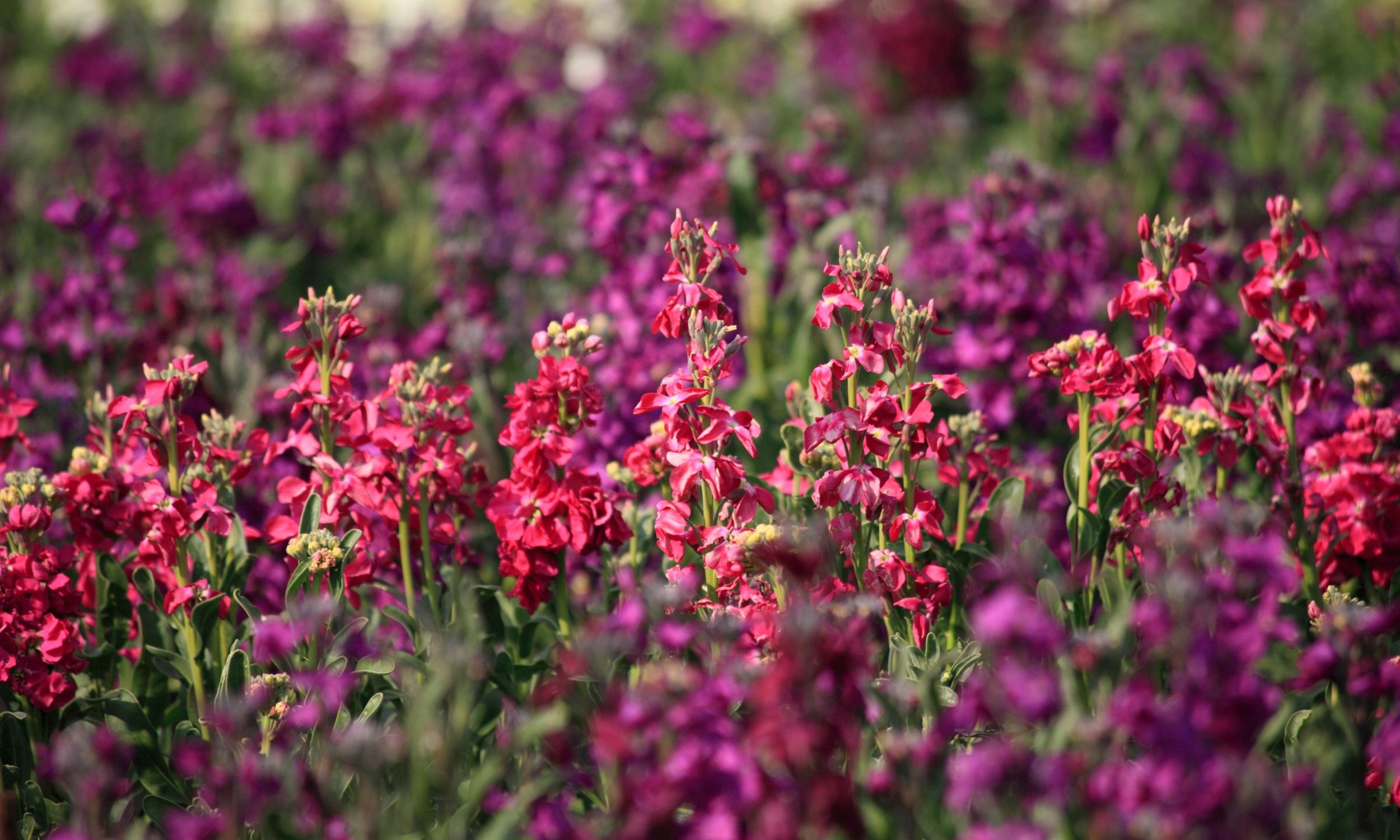10 Easy Cut Flowers to Grow
Have you ever wanted to try growing cut flowers… but didn’t know where to begin?
You’re not alone! Many people have asked me to share ideas about easy cut flowers to grow.
I’ll be the first to admit that growing flowers is not nearly as easy as it looks, but these flowers listed below will likely thrive and provide you with some beautiful blooms, even if you are a complete beginner.
This is by no means an exhaustive list, and you’ll likely want to branch out later and grow more varieties… but this is a great start!
Disclosure: Some of the links below are affiliate links, meaning, at no additional cost to you, I will earn a commission if you click through and make a purchase.
The flowers on this list were chosen because:
They can be Direct Sown. This means you can simply plant the seeds in your garden, water them and they will grow. No need to start them indoors first or purchase transplants.
They are annuals, meaning they will grow from seed to bloom in one season.
The seeds are inexpensive.
The plants will produce flowers for many weeks, unlike some annuals, many perennials or flowers grown from bulbs.
All of these flowers can be Direct Sown into your garden after the threat of a spring frost is over. Don’t know when your Average Last Spring Frost is? Simply Google “average last spring frost ______________” and insert the name of your town.
What are the easiest cut flowers to grow?
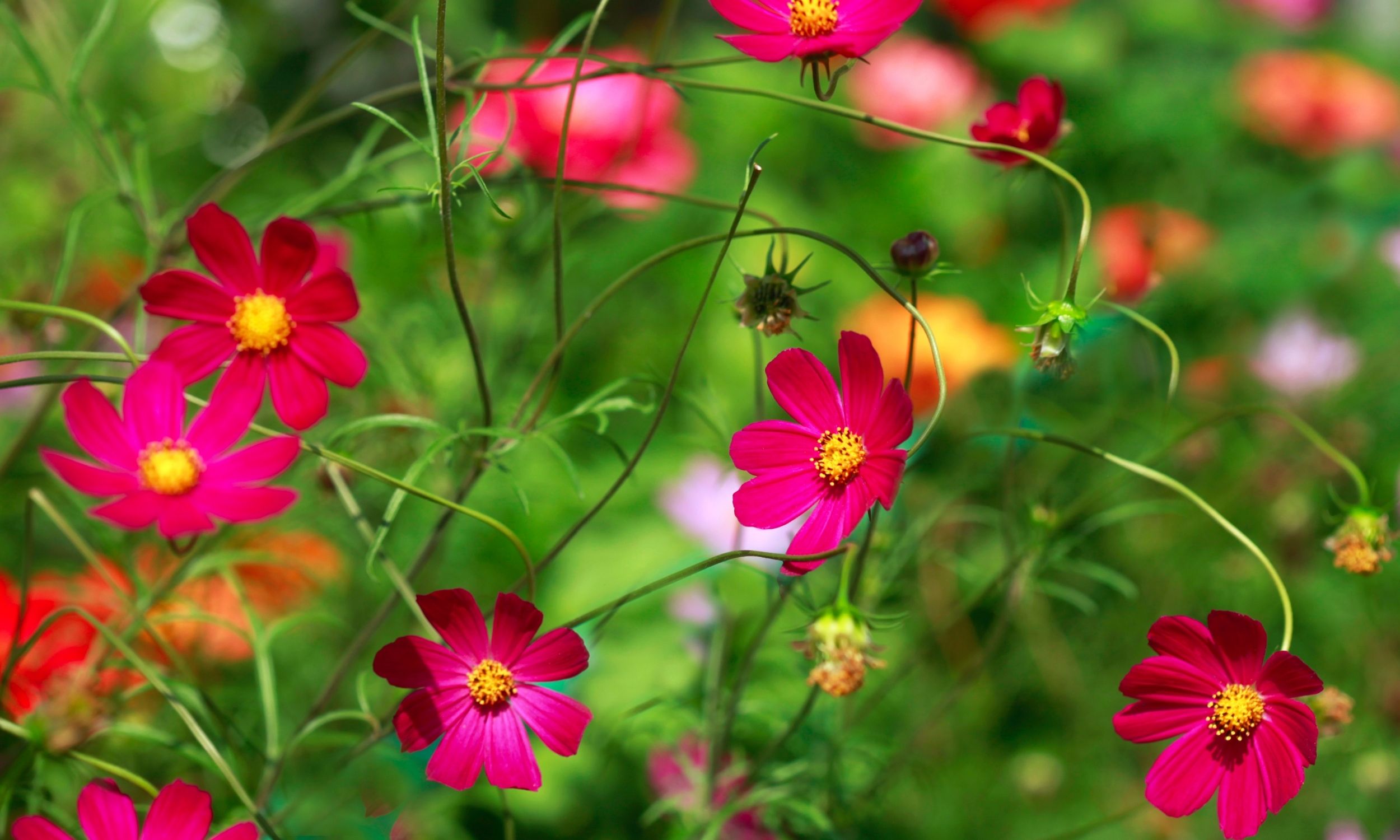
Cosmos
Cosmos are by far one of my favorite flowers. The blooms are ridiculously romantic and endearing. They prefer to be Direct Sown and will provide you with weeks and weeks of blooms from just one planting. The more you cut them, the more they produce, so be sure to cut deep into the plant.
Cosmos are beautiful in mixed bouquets or in bunches all by themselves. They add whimsy, air and movement to mixed bouquets and I like to include them in almost every arrangement.
They come in a wide variety of pink, white, burgundy and even pale yellow. Some have single rows of petals, while others are lush and ruffled.
You can also use the lacy Cosmos foliage (leaves) as greenery for your bouquets.
Helpful Hint: Harvest stems/sprays of flowers right as they are beginning to break out of the bud stage (when you can just see the petals starting to unfurl). If harvested at this stage, you can expect 5-7 days of vase life. If harvested after the flowers are fully open, you’ll only get 2-3 days of vase life.
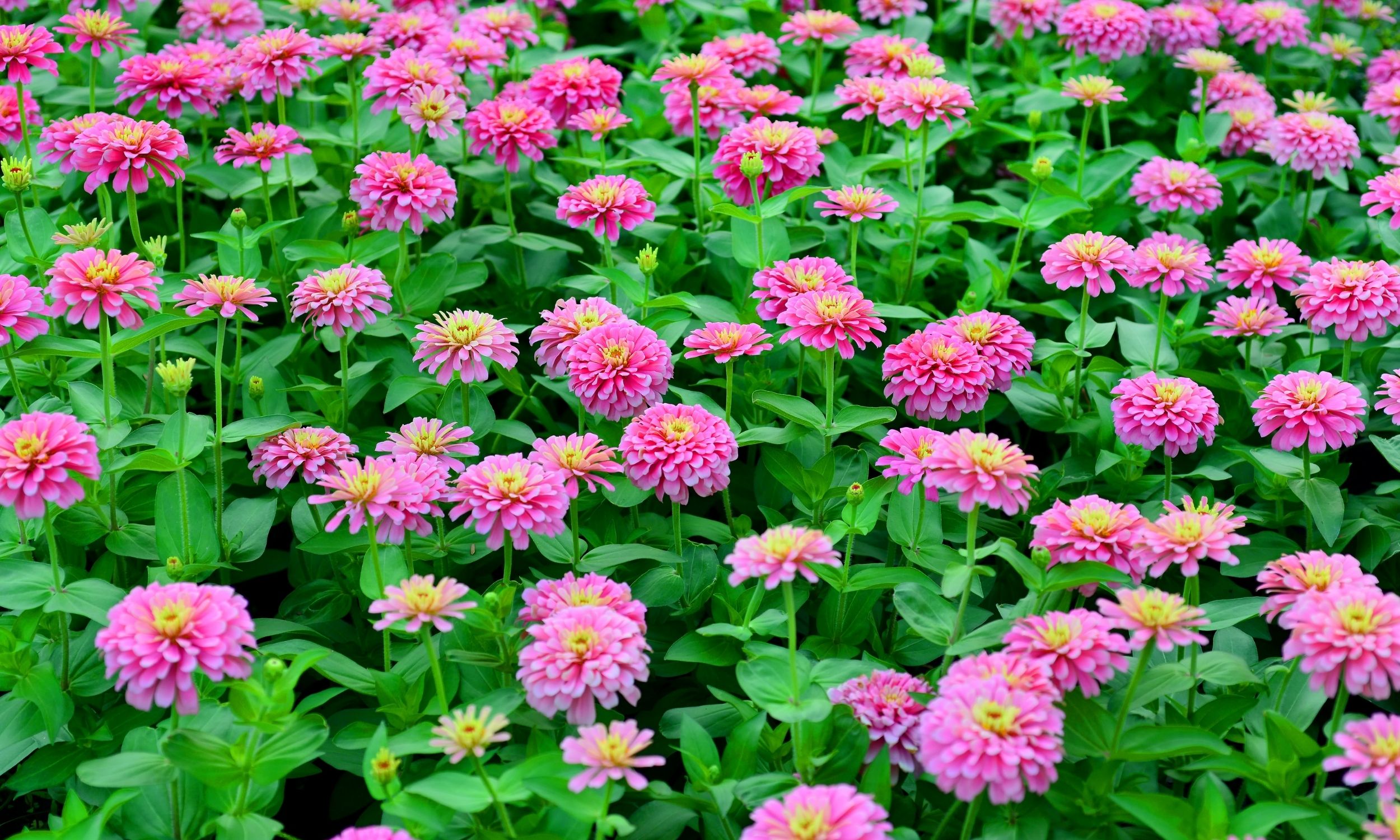
Zinnias
Everyone seems to love Zinnias! Their bright cheery colors seem to scream “Summer!” and they are easy to grow.
Zinnias prefer to be Direct Sown. They grow quickly and like Cosmos, the more you cut them, the more they produce, so don’t be afraid to cut deep into the plant. Deep cuts signal the plant to produce even more flowers!
Depending on where you live, Zinnias can succumb to Powdery Mildew during stretches of hot humid weather. Try planting seeds every few weeks to extend your growing season and remove diseased plants.
Helpful Hint: Cut Zinnias after they are fully open. Zinnias are considered to be a “Dirty Flower”, meaning they muck up the vase water quickly. Be sure to change the water or daily or add one drop of bleach to the water.
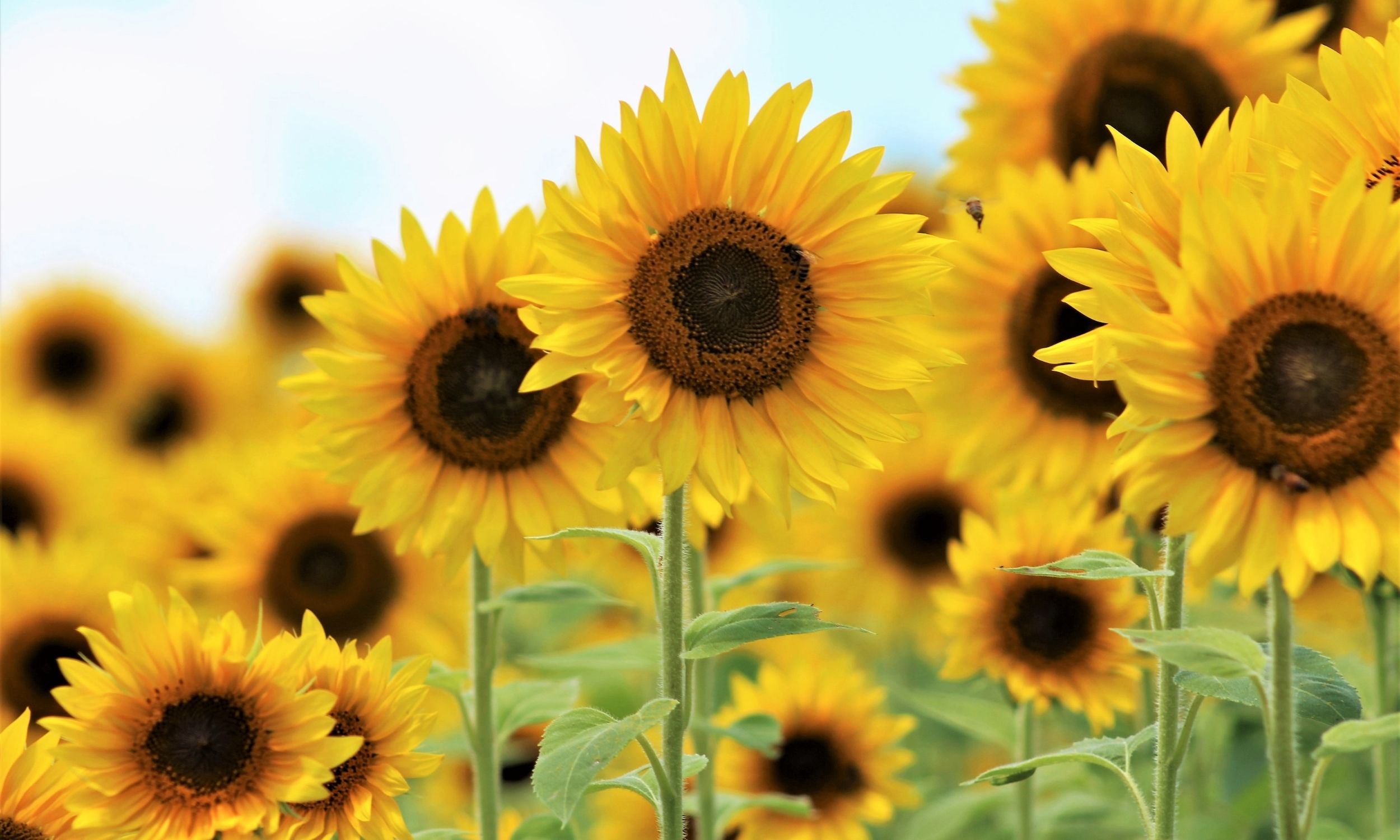
Sunflowers
Sunflowers might just be the epitome of summer! Their bright cheery faces never fail to lift our spirits.
They also happen to be very easy to grow and they love to be Direct Sown. Unfortunately, many animals also like to eat sunflower seeds, so you may need to cover the planting area with a sheet or netting to save your seeds from birds and squirrels until the plants have germinated and established.
Sunflowers come in 2 categories: Branching (plant seeds 18” apart) or Single Stem (plant seeds 4” apart).
Branching will give you multiple blooms over a week or two. Single stems only produce 1 flower.
Direct Sow sunflowers starting at your average last spring frost date and continue planting them every 2 weeks until mid summer to have a constant supply of blooms.
Helpful Hint: Harvest sunflowers when just 1 or 2 petals have started to lift/unfurl. The flower will continue to open in the vase and give you nearly a week of vase life. If cut when fully open, only expect a few days in the vase.
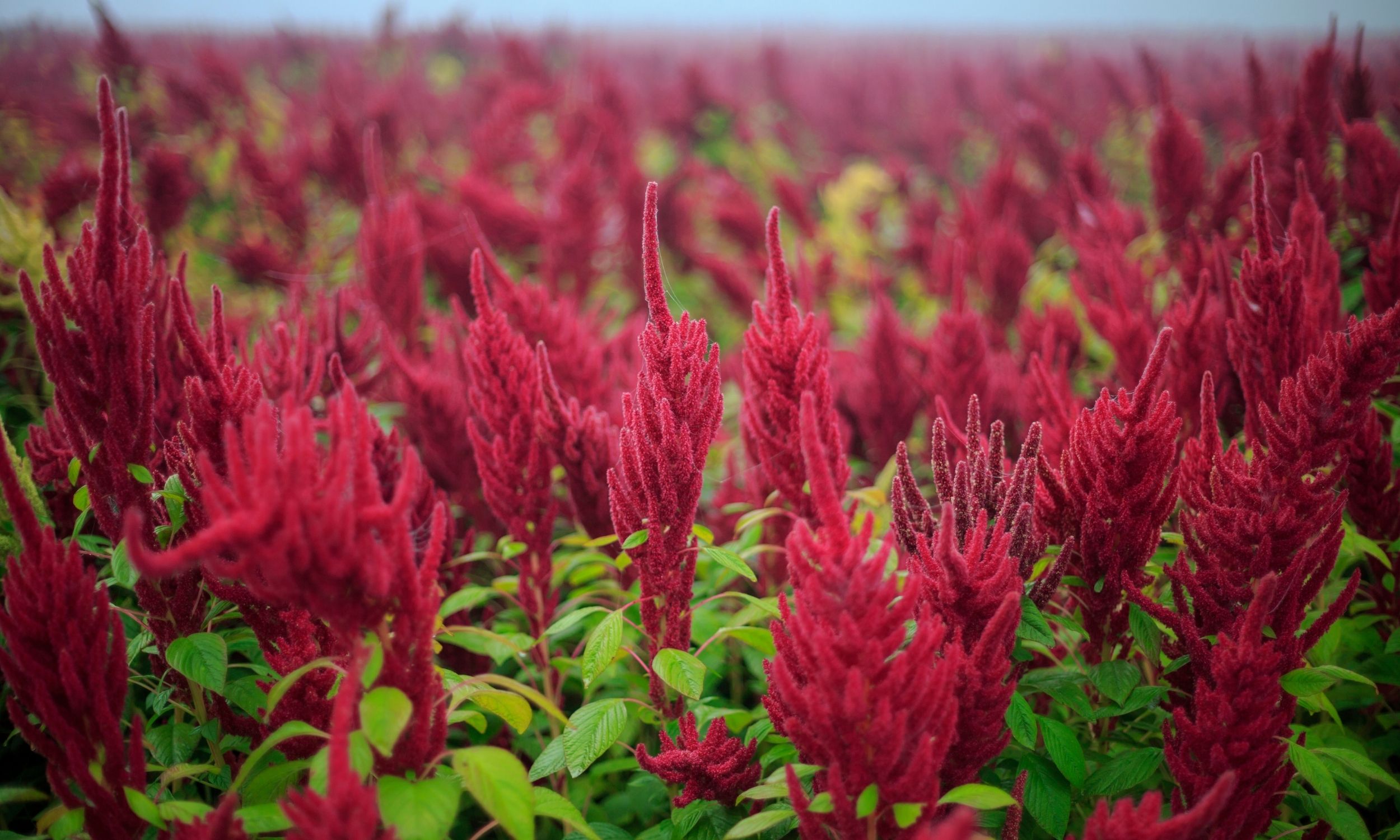
Amaranth
Amaranth is one of the easiest possible flowers for a beginner, especially the Love Lies Bleeding variety. Direct sow early in the spring, basically forget about them (an occasional watering is appreciated) and collect the blooms in the fall.
Amaranth can be started indoors 4-6 weeks before the last frost. Barely cover seed. Bottom water or mist to avoid covering seeds with displaced soil. Transplant outside after the last frost.
Harvest when at least 3/4 of the flowers on the inflorescence are open.
Helpful Hint: Make sure that you strip the leaves off – the leaves will get wilty very quickly, and can actually cause the entire stem to go floppy if you allow them to remain.
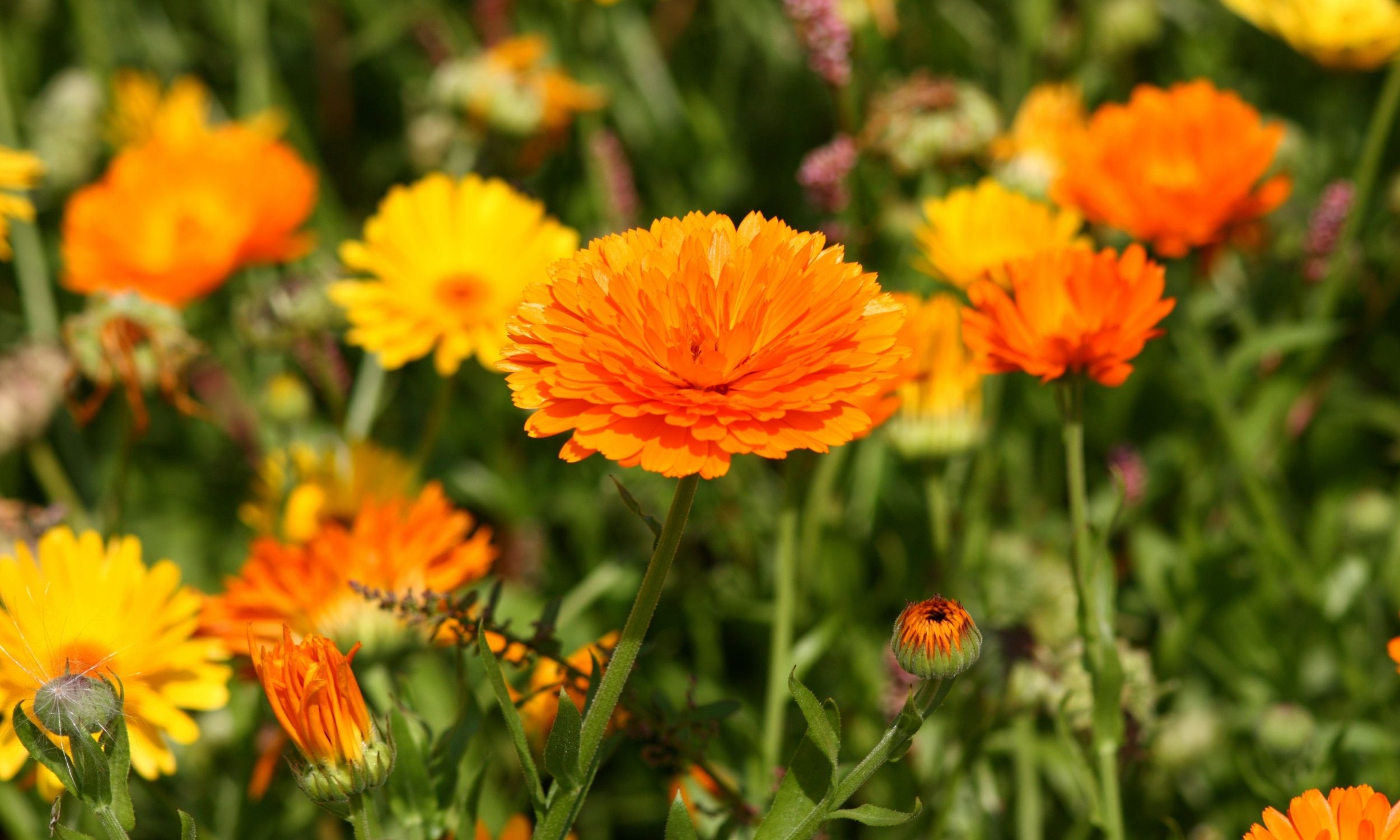
Calendula
Calendula is a multipurpose flower in the garden. It’s a beautiful and versatile cut flower, it is a beneficial flower in the vegetable garden, and it’s leaves are great dried in homemade beauty products.
To harvest calendula, cut the stalk all the way to the base of the plant. Chances are that you’ll have to most likely strip off some side stems – some of which may be too short to really use in design work, so you can appreciate them in a bud vase or compost them.
The stalk may be a bit thick, especially if it’s the first harvest of the plant, so be aware that it may take some close maneuvering to get them in just the right spot in a bouquet. Just know that the closer to the base you cut the calendula, the more stems it will send out in response!
Helpful Hint: When cut, calendula exude that characteristic sticky resinous sap. While great for making your skin soft and healing eczema and dry skin in the wintertime, it can get annoying during the growing season and when you’re trying to harvest stems of calendula only to have the sticky resin getting on your hands, tools and clothes.
A bit of rubbing alcohol will disperse the resin quickly, and cutting them into water will help them to exude their resin prior to using them in arrangements, cutting down or even eliminating the stickiness of the stems.

Pincushions
Pincushions are amazing because they look good at every point in their life cycle. Whether you cut them when they’re just emerging, in bloom, or as a seed pod, they look interesting in the vase.
Both annual and perennial scabiosa start from seed very easily. Annual scabiosa is a bit of a longer plant to start flowering, taking around 90-100 days to do so.
To harvest scabiosa for their flowers, you’ll want to wait until they are fully open or almost fully open. If you want to harvest them for your home, you’ll want to snip them when the florets have just opened.
Pincushions are a great supporting or helper flower.
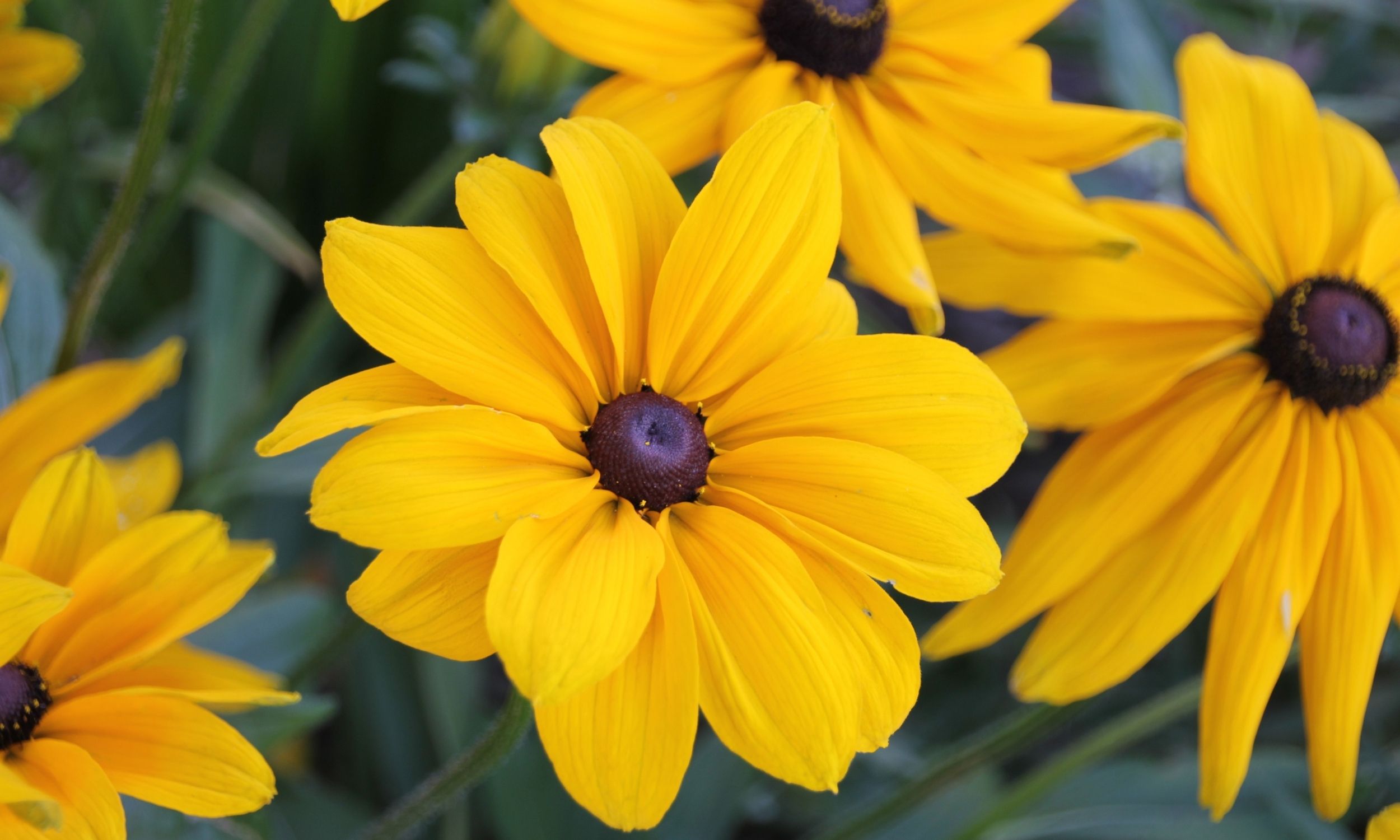
Rudbeckia
Rudbeckia is available in both perennial and annual varieties. This beautiful flower will bloom in late summer and last all the way into the fall until a hard frost. Rudbeckia is also known for their bright gold coloration which doesn’t necessarily combine well with other flowers, especially when it comes to wedding color palettes that require softer, more pastel colors.
It’s best to start them in July or August of the year prior to when you want to harvest them for their flowers. This way you’ll be able to grow out your seedlings for a good fall planting that will allow them to get established prior to the winter.
Rudbeckia seeds germinate pretty readily – not quite as quick as zinnias or marigolds, but they’ll usually take around 5-10 days to pop up. I find that giving them a cold stratification treatment helps them to germinate more readily and uniformly, but it’s not 100% necessary.
We harvest rudbeckia when the flowers are just starting to open for the maximum vase life, cutting down at the base of the plant and harvesting the entire stem.
Get your stems into some cool clean water and let them sit overnight before designing with them. We find that our rudbeckia actually last a very long time – I’ve had stems last six weeks when stored in a cool place out of direct sunlight! Nothing crazy either, just stored on a windowsill in clean water.

Snapdragons
Snapdragons are easy to find in garden centers and big-box stores if you aren’t able to start them from seed yourself. Look for the Madame Butterfly and Rocket varieties to ensure they grow tall enough for cutting.
Snapdragons take a long time to grow. Snapdragons have very small black seeds – they’re almost as bad as poppies.
Snapdragons like a relatively warm space (70 F) and a little bit of light (indirect light from a window or direct light from a shop light). The seeds will start to pop up here in about 7 days, after which you will want to get under light.
When you harvest snapdragons make sure to cut down as low as you can go, all the way to the base. If you cut halfway through the stem, you’re going to just end up having a weirdly-forked stem with multiple little heads on top. Instead, cutting down at the base of the plant will encourage it to send out nice long side branches. It sounds counterintuitive, I know, but believe me that it will work!
Cut when ⅓ to ½ of the lower flowers have opened, but the top flowers are still in bud. After cutting you can go back in and give a good feed of fish emulsion and kelp to encourage regrowth.
Snapdragons are surprisingly hardy and will survive the first frost of the season.
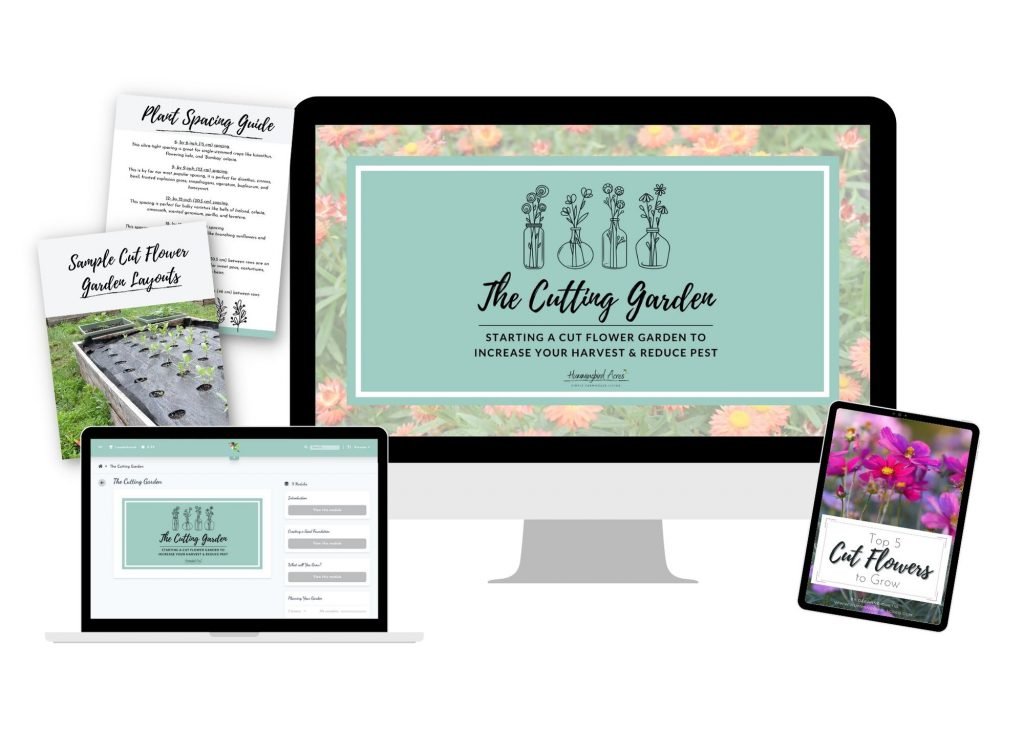
The Cutting Garden
Our beginner gardening course for anyone who wants to grow beautiful flowers in their backyard and fill all of the vases in their home.
Stock
Stock is not a cut-and-come-again flower, but it’s so pretty and so easy to start from seed that it still makes my list. My stock plants also survived the hardening off process in the spring the easiest.
Stock is one of the most fragrant flowers you can grow. Its scent is described as both sweet and spicy, not to mention incredibly pleasant.
Stock is planted as an annual, biennial, or perennial, depending on the region where they will be grown. In colder climate areas, stock flowers are planted as annuals, as they will not survive more than the first few frosts. In warmer climates, stock is considered a perennial, as the hardy plants can survive for several years, coming back with sturdier, woodier stems each year, until the summer heat eventually takes its toll. Stock can be considered a biennial because it has a tendency to bloom and set seed in its second year.
Stock flowers need very little care once established. Water is needed during dry periods or drought, but usually, rainwater will suffice. Fertilize once per month with a general purpose fertilizer for flowering plants. Deadhead the flower heads during the blooming season to encourage new growth and an elongated blooming period.
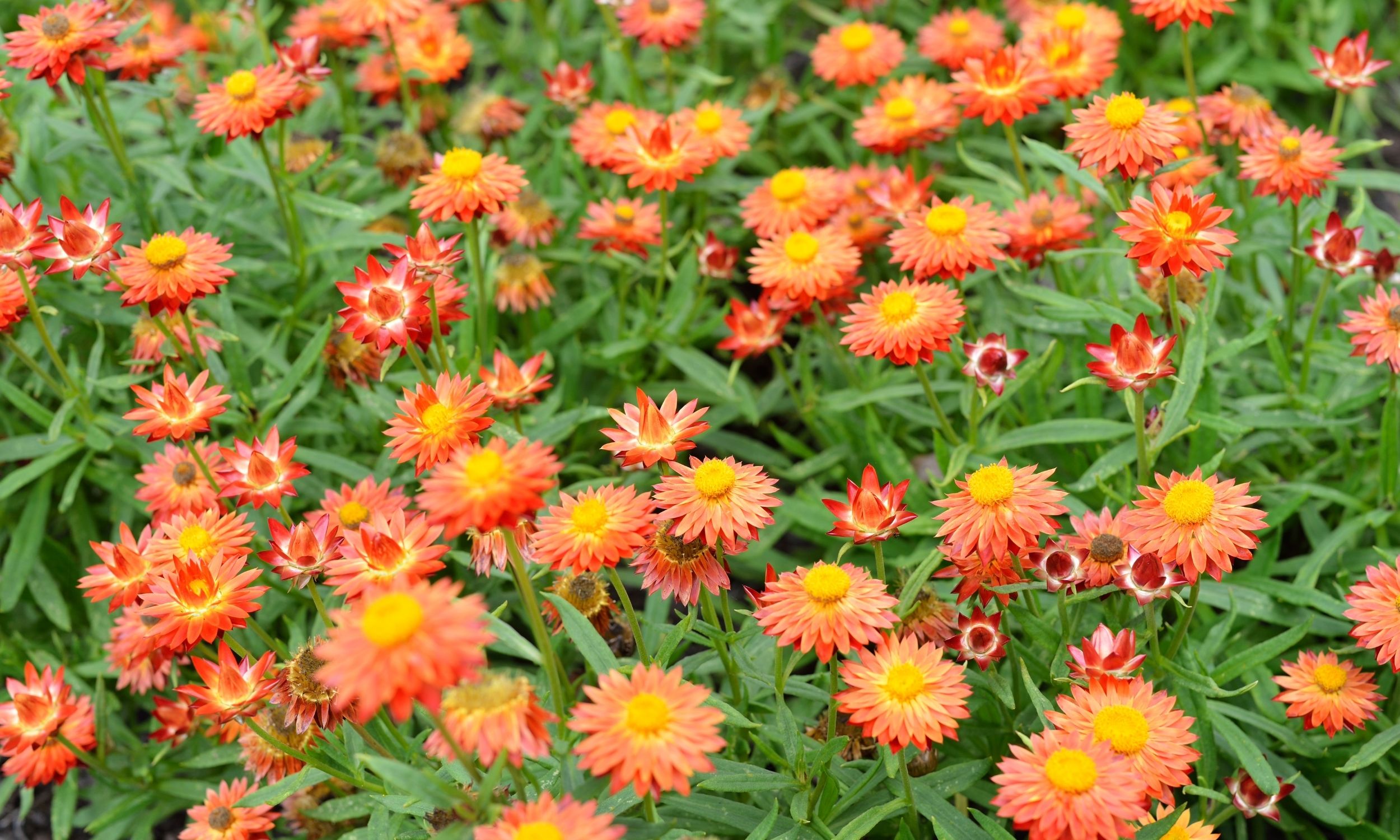
Strawflowers
Strawflowers are hands down my new favorite cut flower to grow from seed. Almost every seed I planted came up, they last a long time in the vase, are a cut-and-come-again flower, and are easy and fun to save seeds from. Just make sure you purchase a tall variety and not a dwarf one that’s meant for pots.
Plant indoors 3-5 weeks before last frost. Do not cover seed as light is required for germination. Bottom water or mist to avoid covering seeds with displaced soil.
Strawflowers do best in a location with full sun, where the soil is slightly acidic, nutrient-rich, and well-draining. With good soil, fertilizer is not needed.
Harvesting increases yields. Cut when 2-3 layers of petals have unfolded but before flowers fully open.
I’ll be the first to admit that growing flowers is not nearly as easy as it looks, but these flowers are some of the easiest Cut Flowers to Grow. They will likely thrive and provide you with some beautiful blooms, even if you are a complete beginner.
Remember this is by no means an exhaustive list, and you’ll likely want to branch out later and grow more varieties… but this is a great start!

